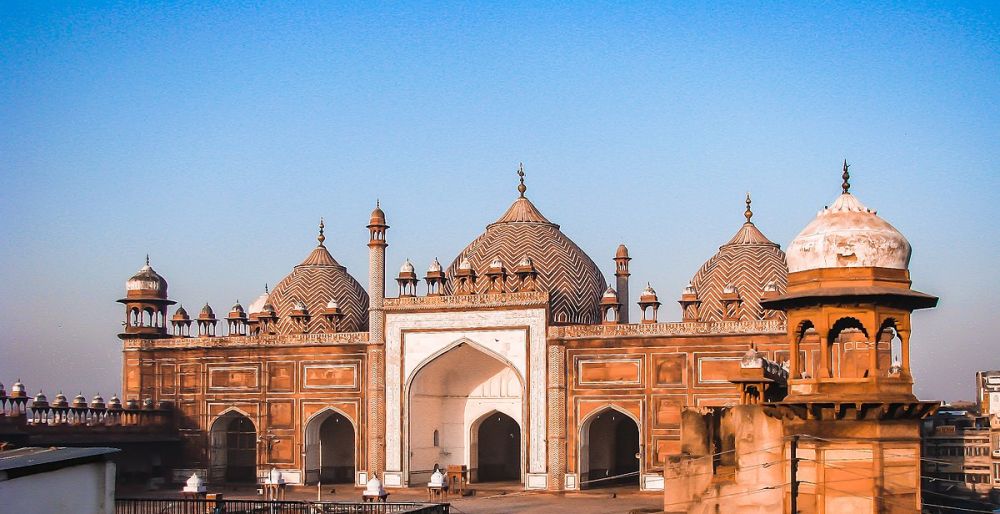

Agra, situated in the heart of Uttar Pradesh, India, is not only home to the world-renowned Taj Mahal but also hosts an array of historical monuments, one of which is the Jama Masjid. Also known as the "Friday Mosque," Jama Masjid in Agra was built by the Mughal Emperor Shah Jahan in 1648 and is dedicated to his favorite daughter, Jahanara Begum. The mosque is situated opposite the Agra Fort and is a conspicuous landmark in the city.
The history of tourism at Jama Masjid Agra dates back to the time when Agra was the capital of the Mughal Empire. This period saw a great influx of visitors, including traders, diplomats, and travelers from across the globe who documented the majestic architecture of the era. Jama Masjid became a place of not just religious significance but also a testament to the grandeur of Mughal architecture. With the establishment of the British Raj, the focus on Agra as a must-visit destination for colonial officers and later tourists further increased.
In contemporary times, the significance of Jama Masjid has been recognized by numerous tourists who flock to admire its architectural beauty and imbibe the spiritual atmosphere. The mosque, with its red sandstone façades and intricate white marble decorations, stands as a testament to the rich cultural heritage of Agra and India's Mughal past.
Tourism at Jama Masjid and in Agra has evolved significantly over the years. While the historic and cultural narrative continues to draw visitors, recent trends point towards an increase in experience-based and responsible tourism.
Today's travelers are increasingly interested in immersive experiences, with many seeking to engage with the local community, culture, and cuisine. Hence, guided heritage walks, cultural performances, and food tours around Jama Masjid have become popular. This interest in authentic experiences is balanced with a growing awareness of the importance of preserving the historic integrity of sites like Jama Masjid, and as such, sustainable tourism practices are being more widely adopted.
With the power of social media and online platforms, the awareness and reach of Agra's monuments, including Jama Masjid, have expanded. This digital presence has allowed a younger, tech-savvy audience to explore Agra virtually before they even set foot in the city, fueling their desire to visit and experience its wonders firsthand.
Additionally, in response to the global COVID-19 pandemic, health and safety protocols have been a key focus area. Precautions to ensure a safe experience for visitors to Jama Masjid and other tourist destinations in Agra are in place, in line with both local government guidelines and international best practices.
For tourists planning to visit Jama Masjid, it is recommended to go during the cooler months, from October to March. Visitors should also be aware that as a place of worship, appropriate attire should be worn out of respect for religious customs. Photography is permitted, but visitors should be sensitive to worshippers during prayer times. Entry to the mosque is free, although donations are welcome.